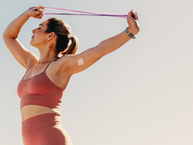Glutathione is a naturally occurring antioxidant produced by our bodies. It plays a critical role in various processes like maintaining oxidative status, detoxification, and immunity. Glutathione deficiencies and inadequate levels can lead to mild or severe symptoms and may even be linked to numerous clinical conditions like cancer and diabetes.
While glutathione is a nutrient present in many foods, glutathione patches provide higher concentrations than what you can get from food. This begs the question: should you consider using a Glutathione Plus Patch? Let's explore what glutathione is, how to prevent and treat glutathione deficiency, and how to use glutathione patches effectively.
Glutathione Deficiency: Symptoms and Effects
Severe or suboptimal glutathione levels can result in various symptoms, such as:
- Fatigue
- Difficulty concentrating or remembering
- Trouble sleeping
Low glutathione levels have also been linked to serious conditions like:
- Type 2 diabetes or poor blood sugar control
- Certain types of cancer
- Multiple sclerosis
- Hypertension
- Parkinson's disease
- Alzheimer's disease
- Mental health disorders
Causes of Glutathione Deficiency
There are several reasons for a glutathione deficiency:
- Glutathione synthetase deficiency: A rare condition affecting only dozens of people worldwide. It results from the lack of proper function of the enzyme responsible for producing glutathione in the body.
- Natural aging process
- Low protein diet
- Inadequate nutrient intake
- Certain infections or chronic diseases
- High-stress levels
If you suspect a glutathione deficiency, consult your doctor for a test, and discuss the potential use of a Glutathione Plus Patch.
Testing for Glutathione Deficiency
Testing for glutathione deficiency involves a simple blood test performed at a standard lab. Your doctor can order this test, which measures glutathione levels in your red blood cells or plasma. However, since some individuals have different biological setpoints for glutathione production, the test results may not be entirely accurate. A diagnosis of glutathione deficiency should be based on both test results and symptoms.
Boosting Glutathione Through Diet
Many nutritious foods contain the building blocks for glutathione, including sulfur-containing foods like:
- Animal-based proteins (beef, fish, chicken)
- Green or cruciferous vegetables (broccoli, cauliflower, brussels sprouts, kale)
- Onions and garlic
However, glutathione patches can provide significantly more glutathione than food sources.
Using Glutathione Patches
Glutathione patches, like the Glutathione Plus Patch from PatchAid, make it easy to increase your glutathione levels. They contain 100 milligrams of L-glutathione (reduced active form), equivalent to approximately 2 pounds of broccoli.
Unlike oral glutathione supplements, which may cause side effects like cramps and bloating, glutathione patches do not lead to digestion-related issues. To use a glutathione patch, simply peel off the backing, stick it onto clean, dry skin, and leave it on for up to 8 hours.
The Glutathione Plus Patch from PatchAid also contains supporting nutrients and compounds, such as N-acetyl-cysteine, vitamin B2 (riboflavin), vitamin C, milk thistle, alpha-lipoic acid, molybdenum, manganese, coenzyme Q10, and PQQ (pyrroloquinoine quinone).
Maintaining optimal glutathione levels is crucial for overall health. Suppose you have symptoms of glutathione deficiency or suspect low glutathione levels. In that case, consult with your doctor about using glutathione patches. The Glutathione Plus Patch offers high amounts of glutathione and supporting nutrients, making it easy to use alongside other PatchAid Patches with your doctor's approval.







